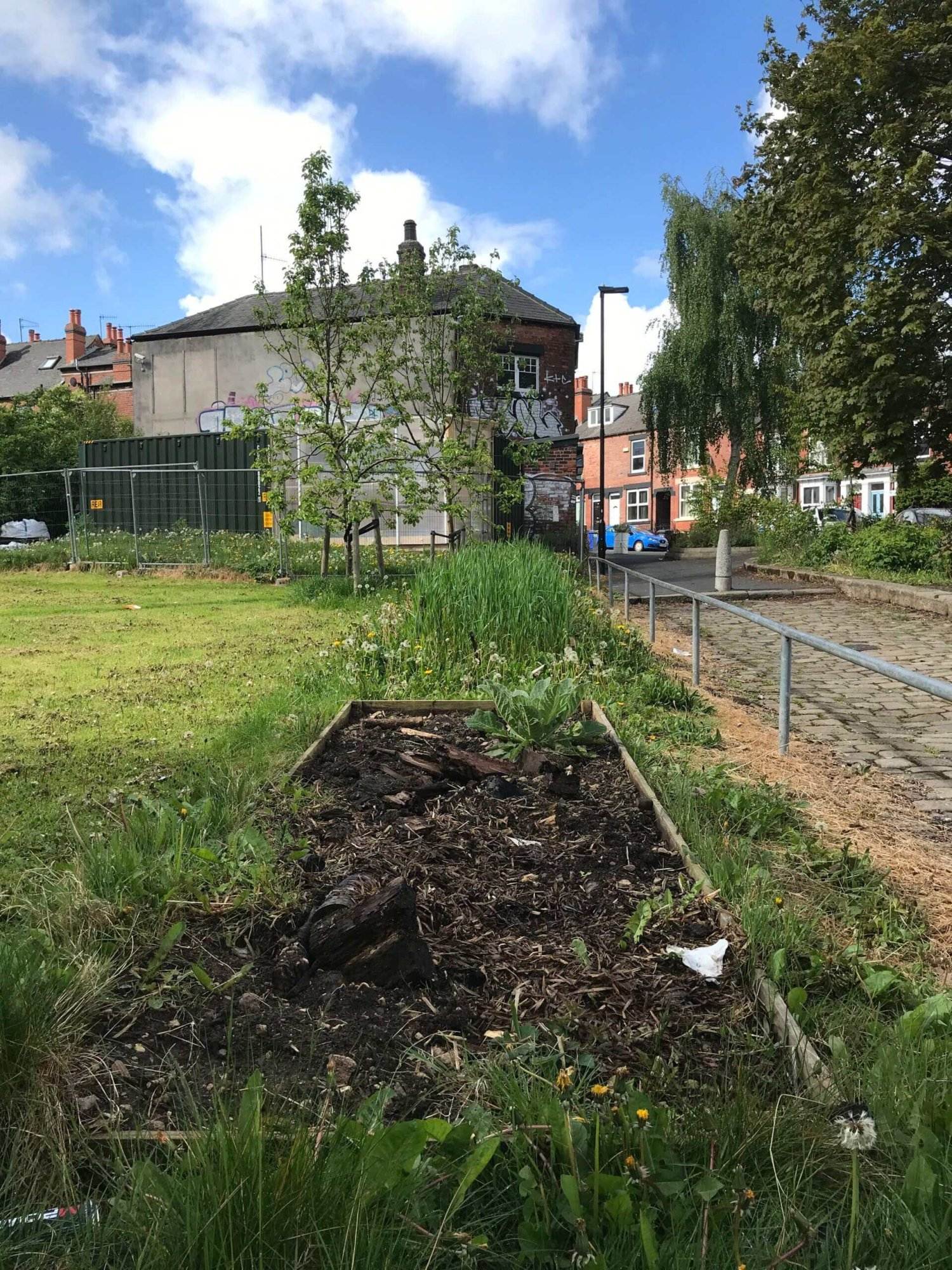In January 2021, 2.51% of the adult population in Sheffield was classed as hungry, with 8.1% struggling to access sufficient food. Sheffield is experiencing a ‘Nature Emergency’, and the threat of climate change is growing. Conventional agriculture destroys the environment and society’s control over and connection to food.
Images of huge fields and tractors may come to mind when we think of farming. But there is an alternative that looks a lot different; using unusual urban spaces such as roadside verges, parks, and people’s gardens. Research suggests that with just 10 percent of this land, we could feed 90,000 people in Sheffield! Here’s why space is the key to more local food in our city!
Green Space in the City
Currently, only 1% of urban green spaces in the UK are used for food production. Yet, if we made better use of these spaces, the UK could grow up to 8 times more fruit and vegetables, making up 38% of the produce eaten yearly. In the last few years, ShefFood, Sheffield City Council (SCC) and the University of Sheffield have commissioned research on green spaces in Sheffield and the potential for urban food production.
The Carter Jones Rural State Management Plan report, commissioned by SCC, audited the council’s current landownership in 2022. The Council’s Rural Estate comprises a portfolio of rural land and properties which extends to approximately 3,000 hectares (7,423 acres). Meanwhile, academics at the Institute for Sustainable Food at the University of Sheffield have investigated the potential for using urban horticulture by mapping green spaces in the city. They found that using just 10 per cent of this land, which also includes gardens, allotments and woodland, could help feed nearly 90,000 people or 15 per cent of Sheffield’s population.
Dr Jill Edmondson, an environmental scientist at the University of Sheffield, said: “At the moment, the UK is utterly dependent on complex international supply chains for the vast majority of our fruit and half of our vegetables, but our research suggests there is more than enough space to grow what we need on our doorsteps.”
What Urban Farming could look like in Sheffield
With such a vast network of green spaces in our urban area, the potential to grow food for local people is easily possible. But, it might look quite different to traditional agriculture.
Unused Green Spots, Brownfield Sites and Community Spaces
Walk down any street in Sheffield, and you will likely come across disused space that people could use for growing. From grass verges, vacant lots, and disused flower beds to bare soil around trees, anyone could plant food-producing plants in countless places. The Garden of Earthly Delights is a community garden in Hackney, London. It was formerly a disused lot that guerilla gardens reclaimed in 2019 and has become a community hub. Community gardens could be an essential part of a new food system, and Sheffield already has many thriving ones. Common Grounds allotment at St Peter’s Hall, Lansdowne Estate Project and Kenwood Community Growers are all great examples of community growing spaces. Meanwhile, Sheffield Fruit Trees are on a mission to see “fruit trees growing in every garden, allotment and roadside in Sheffield”.
Gardens, Allotments and Parks
Sheffield city council manages over 3,000 allotment plots on over 70 sites, countless more privately run allotments, and tens of thousands of private gardens in the city. Each one of these areas could produce masses of food for both the keen growers and their neighbours. Food Works Sheffield runs the Grow A Row and Repurpose Your Surplus scheme each year for allotment owners with too much produce (courgettes, we are looking at you!). In 2021, they repurposed over 2.5 tonnes of surplus fruit and vegetables – enough to make 5108 meals! Imagine what could be made with all allotments and gardens growing for Sheffield. Plus, with 13 City parks, 20 district parks and over 50 local parks in Sheffield, there are even more potential places to grow seasonal food too.
Vertical, Indoor and Roof Top Growing
Space isn’t just about the outdoors; a surprising amount of food can be grown indoors using renewable energy-powered systems such as hydroponics and vertical growing systems. Leaf + Shoot is an excellent example of using an usual space. They are an underground bioponic vertical farm in the heart of Kelham, bringing 100% organic and veganic produce to the people of Sheffield customers. In addition, disused buildings, of which there are many in Sheffield, could be repurposed for urban growth. Similarly, rooftops could be another source of growing space in the city centre. According to a study in the Nature Food Journal, the UK currently imports 86 per cent of its total tomato supply. Still, if 10 per cent of the flat roofs identified in the centre of Sheffield became tomato farms, with the help of soil-free hydroponics, it would be enough to feed more than eight per cent of the population one of their “five a day”.
The Future
Dr Beth Nicholls of the University of Sussex said, “In a world of increasing urbanisation in both the developing and developed worlds, producing food in and around cities has the potential to improve both nutritional and health outcomes, alleviate poverty and simultaneously provide habitat for wildlife and create sustainable cities.”
While the council, businesses and anchor institutes, such as Universities, can take the lead on bringing farming into the city, there are lots that the people of Sheffield can do. From growing your own to volunteering at community gardens, making seasonal food more accessible can start from your very own windowsill.

